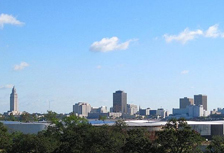Drug Addiction in Louisiana
 Addiction and Abuse One of Many Problems
Addiction and Abuse One of Many Problems
Louisiana is well known as a place of great cultural and natural resources as well as great troubles. 2010 marked Louisiana's 22nd year in a row bearing the nation's highest per-capita murder rate. Louisiana is also the fastest-disappearing state in the union; it is estimated that as much as 10,000 feet worth of coastal Louisiana falls below sea level every day between a combination of rising sea levels, erosion, and engineering projects.
Substance abuse problems also permeate sections of Louisianan society. Much of the non-coastal parts of the state are relatively rural and experience below-average drug abuse problems like many Southern states. However the Gulf Coast's many urban and tourist centers have extremely disproportionate drug abuse problems and are also where much of the state's crimes occur.
New Orleans Still in a Sharp State of Crisis
New Orleans, of course, is at the center of this. Gang activity, street drug use, and poverty are on par with many Northern metropolitan areas. This is especially true with the amount of crack and heroin addicts in the city which are not found in such large numbers almost anywhere else in the Southern United States. Furthermore a majority of admissions into addiction treatment centers in the city are referrals from criminal justice, which is a tell-tale sign of the severity of the city's drug epidemic.
Between Texas and Florida, coastal Louisiana is a prime location for major drug trafficking for those that smuggle heroin, cocaine, methamphetamine, and marijuana from Latin America. So the availability and prevalance of drugs in the area is something that no one has been able to capably prohibit. Furthermore, Louisiana also has rampant abuse of unprohibited substances; alcoholism and addiction to prescription drugs is commonly found in the state, and unlike illicit substances, their popularity is not bound to metropolitan areas. In fact, alcoholism is involved in at least 50% of admissions to addiction treatment statewide, and admissions involving prescription opiate abuse has quickly risen to as much as 20% of admissions, quickly overtaking heroin and methamphetamine in the last decade.
The biggest disadvantage in drug addiction treatment in Louisiana and elsewhere is that hardcore addictions tend to be centralized in certain impoverished areas. Therefore there is not enough funding to develop addiction treatment in the area, and it is also very difficult to have enough capacity for treatment within dense population centers. These two factors heavily contribute to the state having a high rate of untreated addicts, as well as the lack of education about addiction treatment.
Addiction treatment is often the only way to save many people from drugs and alcohol. Cyclical attempts to get sober and then relapse are all too common for those who go on their own, and death is often the outcome. Drug and Alcohol Rehab Centers and halfway homes not only provide a safe environment to get clean but offer the unique experience of therapy and addiction treatment counseling designed to build a long-lasting resolve for sobriety. If a chemical addiction is defeated but emotional and mental health issues persist then someone cannot truly be said to have been properly treated for substance abuse because it is these psychological states that enable addictive and destructive behaviors. If you or someone you love needs an effective and long-lasting way to stop an addiction please contact us right away to see what programs can help you.
Louisiana cities with high drug abuse trends: New Orleans, Baton Rouge, Shreveport, Lafayette, Metairie, Lake Charles, Slidell, Monroe, Houma, and Denham Springs
Louisiana counties with statistically high substance abuse: Jefferson, East Baton Rouge, Orleans, Caddo, Saint Tammany, Lafayette, Calcasieu, Ouachita, Rapides, Livingston, Tangipahoa, and Terrebonne
A Center for Addiction Recovery treats the following addiction problems:
- Alcohol Rehab
- Bath Salts Rehab
- Drug Rehab
- Cocaine Rehab
- Heroin Rehab
- Marijuana Rehab
- Meth Rehab
- Prescription Drug Rehab
- Pain Management
- ADD Treatment
- Bipolar Disorder Treatment
- Cutting Addiction Treatment
- Depression Treatment
- Eating Disorders Treatment
- Gambling Addiction Treatment
- Mood Disorders Treatment
- Post-Traumatic Stress Disorder
- Sex Addiction Treatment
- Withdrawal
A Center for Addiction Recovery offers the following addiction treatment programs:
- Intervention
- Detox
- Drug Addiction Treatment
- Alcohol Addiction Treatment
- 12 Step Program
- Dual Diagnosis Treatment
- Drug Rehab for Women
- Residential Addiction Treatment
- Executive Addiction Treatment
- Addiction Treatment Aftercare






